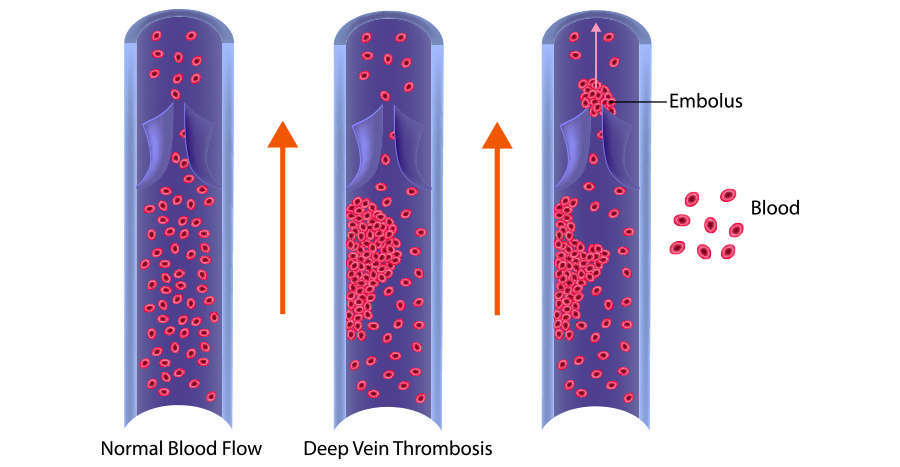Deep vein thrombosis (DVT) is a serious condition that occurs when a blood clot (thrombus) develops in one or more veins located deep inside the body. This kind of blood clot can occur in any part of the body but usually develops in the thigh or lower leg. Deep venous thrombosis treatment is also known as thromboembolism, post-thrombotic syndrome, or postphlebitic syndrome.
Symptoms of Deep Venous Thrombosis Treatment
Symptoms occur in only half of the patients suffering from DVT:
- Swelling in the lower limb including foot, ankle, or leg (usually on one side)
- Severe, unexplained and cramping pain in the affected leg
- Warmer skin over the affected area than the skin on the surrounding areas
- Pale, reddish or bluish discoloration of the affected area
Why is it Necessary to Treat Deep Venous Thrombosis?
A blood clot in the deep vein of the body is a concern as it can cause life-threatening complications. The most common and fatal complication is pulmonary embolism that can occur if a piece of the blood clot breaks and travels through the bloodstream to reach the pulmonary arteries. This blockage of an artery in the lungs can be life-threatening.
Deep Venous Thrombosis Treatment by Dr. Shaheen
Dr. Shaheen treats DVT with an aim to reduce the chances of growth of thrombosis and prevent its breakage. Blood thinners (anticoagulants) such as heparin and warfarin are given for at least 3 months to prevent the formation of new clots and growth of existing clots. If blood thinners don’t work, thrombolytic drugs may be given intravenously to break up clots. Some other supportive measures like elevating leg whenever possible, frequent walking, and wearing compression stockings may reduce the symptoms and give relief to the patient.
If all these do not work then a filter is put inside the vena cava to prevent pulmonary embolisms by stopping clots from entering the lungs.
How can DVT be Prevented?
It’s been rightly said that “Prevention is better than Cure”. Following preventive measures must be taken to prevent the formation of blood clots in veins:
- Take an anticoagulant medicine to prevent blood clots after surgery
- Wear compression stockings
- Start early ambulation and try to get up and out of bed as soon as possible after any illness or surgery
- Move frequently or exercise legs to maintain the blood flow
To manage deep venous thrombosis treatment and reduce the risk of pulmonary embolism, contact us to book your appointment with Dr. Shaheen Vascular in the Bay Area.




